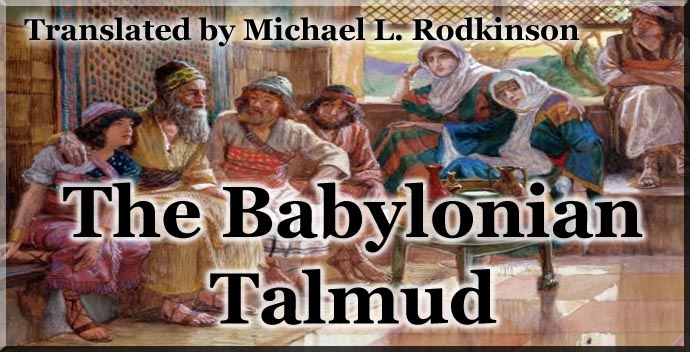|
MANY books have been written by the scientists of the last century, and many lengthy articles have appeared in the various periodicals, concerning the Jewish high court, and this tract, which, if extracts were given, would make an entire bulky volume in itself. However, we deem it best to give the reader the information where these are to be found. The time during which the Sanhedrin were established is the main topic of their discussions. Zunz, for instance, gives the time from King Simeon of the Maccabees. Jost states that it was from the period of Hyrcan. And an anonymous writer in "Israelitische Annalen," Vol. I., pp. 108-134, maintains that they were established at an exceedingly earlier date, and that the Greek name "Sanhedrin" was changed during the time of the second Temple. At all events, Schürer, in his "Jüdische Geschichte," wrote a lengthy article on this subject, in Vol II., from p. 188 to 240 (where there is to be found a bibliography of the subject), concluding with his opinion that the high court began at an earlier time. Z. Frankel, too, in his article, "Der gerichtliche Beweis," Berlin, 1848, claims that the establishment of the jury in the entire civilized world was taken from the Sanhedrin. All this was written in Germany. An English book by Rabbi Mendelsohn also treats upon this topic. We, too, will have something to say concerning this in our forthcoming "History of the Talmud." We are inclined, in many respects, however, to accept the opinion of Reifmann, given in his Hebrew book, "Sanhedrin," Warsaw, 1888. He says that courts were even established in the days of Noah, the judges of which were Shem, Abraham, Isaac, and Amram, continuing until Moses. He, in turn, established a court of seventy judges, and from that time the Supreme High Court was of that number (seventy-one, including Moses), and thereafter supreme courts of twenty-three, and courts of three, were established at all times, and wherever the Jews resided; the sages of the second Temple naming these courts "great" and "small" Sanhedrin. Reifmann's reasons are gathered from the post-biblical literature, and are based upon the Bible. According to him, the three judges had to decide civil cases only, the twenty-three, criminals and capital punishments, and the seventy-one were a political body, who were to decide also the great events; as, for instance, an entire tribe, or the princes and heads of tribes. We, however, would say that the court of three had also to decide criminal cases to which capital punishment did not apply. So it seems to us, from this tract, p. 212 of the Talmud, that a stubborn and rebellious son was punished with stripes by a court of three, before being finally sentenced to death by the court of twenty-three.
Reifmann also quotes from "Midrash Aggada," that before prophesying a prophet was obliged to get permission from the Sanhedrin, who previously tried him whether he was a true prophet or not We may here add that this contradicts the Talmud, for it says that to recognize a true prophet was by demanding a sign, p. 260, and if the prophet would have been obliged to get the permission of the Sanhedrin, this would certainly be mentioned in the Talmud instead.
This is as much as we have to say in regard to the time and name, and that the Sanhedrin ceased about forty years previous to the destruction of the Temple. At the same time we would call the attention of the readers to the fact that this tract distinguishes itself from all others in Halakha as well as in Haggada. Aside from the many strange explanations of the verses of Scripture, which are not used in other extracts, it says plainly that there are numerous laws written in the Pentateuch which have never occurred, and never will occur, but that they were written merely for study. The Haggada also distinguishes in taking the power to judge upon the Bible personages if they are to have a share in the world to come, and also in criticism of their acts, even of the most holy of them. This is self-evident that the later commentaries, and especially the cabbalists, interpreted the Haggada after their ways. We, however, have translated it almost literally, with an effort to make it in some respects intelligible to the general reader, and have also added footnotes, where we deemed it necessary. And we may say that the real student will find much pleasure if he will devote his special attention to this tract.
For this purpose we have made from this celebrated tract a double volume, as we deem it will please the readers and the students, and will also equalize the size of the volumes.
M. L. R.
September 16, 1902.
|



 Home
Home What's New
What's New Bible
Bible Photos
Photos Hiking
Hiking E-Books
E-Books Genealogy
Genealogy Profile
Free Plug-ins You May Need
Profile
Free Plug-ins You May Need
 Get Java
Get Java.png) Get Flash
Get Flash Get 7-Zip
Get 7-Zip Get Acrobat Reader
Get Acrobat Reader Get TheWORD
Get TheWORD